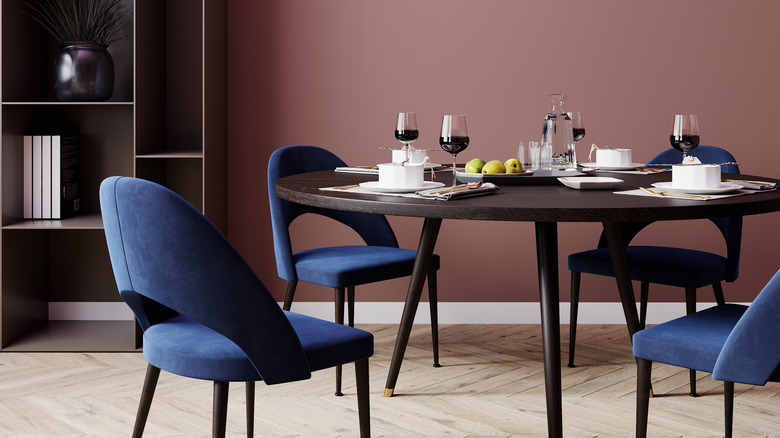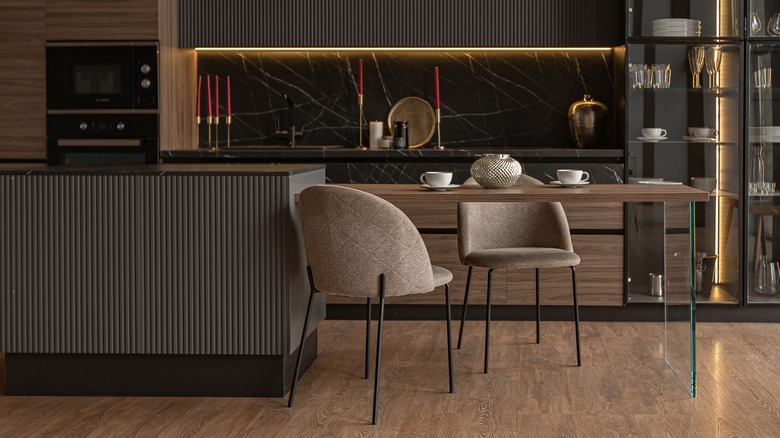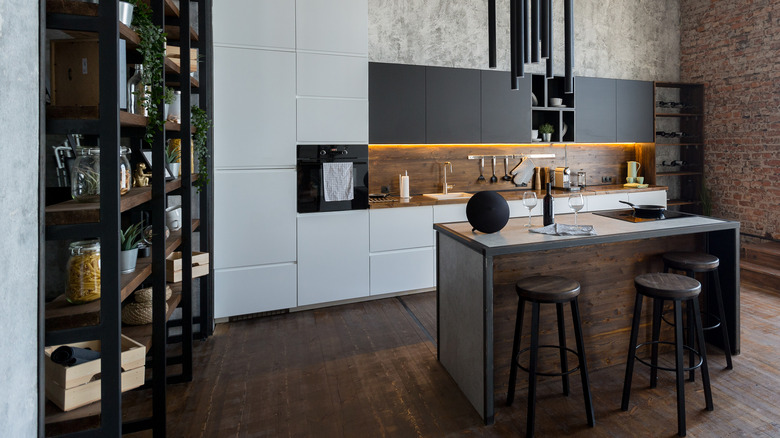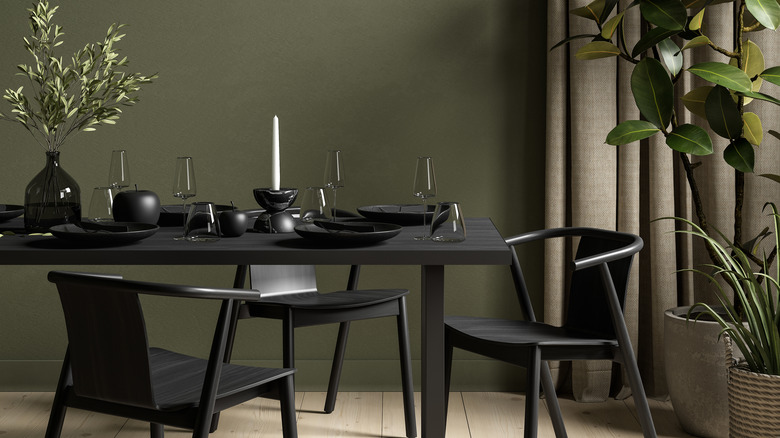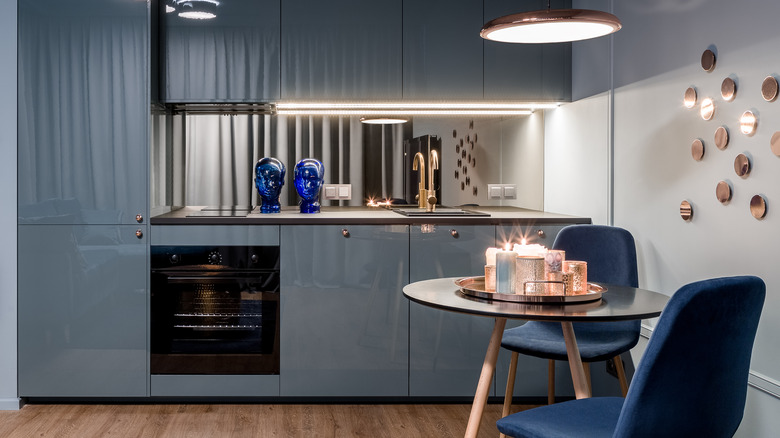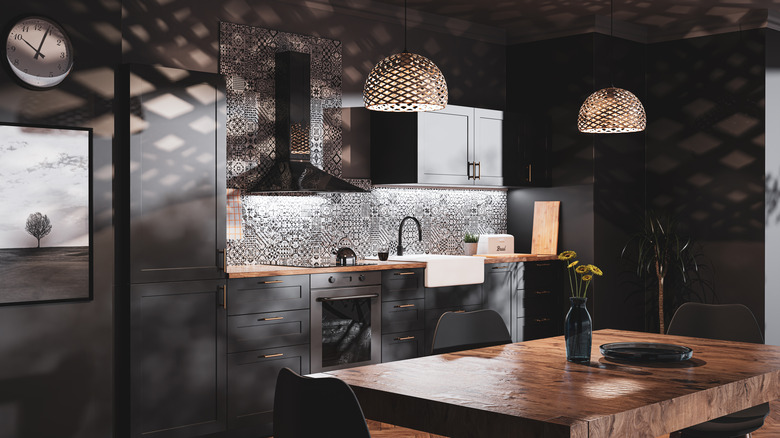What Is The Emotional Support Kitchen Trend?
In today's day and age, people want to surround themselves with things that make them feel enveloped, comforted, and inspired. For example, dopamine dressing is one of the latest fashion crazes, focused on improving your energy and mood through your clothing (via Very Well Mind). Perhaps it's no surprise that your outfit can make or break your mood, but what about home design trends? Enter: The emotional support kitchen.
Calling this design trend an "emotional support kitchen" is a bit of a running joke, but the passion behind the design is very real. Homeowners and renters want their kitchens to feel safe, soothing, and uniquely theirs — not like an image from a department store catalog. Are you ready to revamp your kitchen space? Dreaming about a design that makes you feel more safe, confident, and creative? Have no fear; we'll walk you through exactly what the emotional support kitchen is and how you can achieve it in your home.
Create a cozy and supportive space
Simply put, the emotional support kitchen is a kitchen that feels welcoming and calming. The emotional support kitchen will never judge you for having a rough day, and it's a great place to gather with loved ones through good times and bad. The design itself is luxurious and refined without feeling pretentious. The goal of this interior design trend is to emphasize feelings of closeness, sharing, and trust — almost like a friendly therapist's office, complete with delicious food!
Some key tenets of the emotional support kitchen include comfortable seating, a deep and soothing color scheme, and plenty of places to rest your coffee mug or wine glass. Open floorplans have been all the rage in recent years, and according to Realtor.com, about 84% of newly built homes now have an open or semi-open floor plan. However, the pendulum is beginning to swing in the other direction, and the emotional support kitchen is a design trend that actually works best in a small space. If you don't have an open floor plan or a massive kitchen, this trend will encourage you to embrace your small space.
Look for natural, reliable textures
Because people frequently need to clean and sanitize their kitchens, they often opt for smooth, poreless, and manufactured finishes like acrylic, porcelain, and metal. These materials have their benefits, but too many blank, smooth surfaces can make your kitchen feel sterile and cold — not emotionally supportive. To bring more comfort and warmth into your kitchen, look to natural materials like wood and stone. Although they can be a bit more intensive to clean, natural materials can absolutely transform a space from feeling vast and empty to being alive and connected.
Live edge wood furniture pieces, like tables and countertops, are becoming a more popular way to incorporate natural elements into homes everywhere. According to the American Hardwood Information Center, live edge pieces have traditionally been used for rustic, cabin-like interiors but have recently translated into refined, urban homes. Every live edge piece is unique, adding to the sense of peace you want in an emotionally supportive kitchen. Some other ways to use natural materials in your kitchen include wood or parquet flooring, leather seating, and marble or stone pieces.
Go for a deep, sweeping color scheme
As previously mentioned, a deep and soothing color scheme is one of the key qualities of the emotional support kitchen trend. Paint is cheap, and repainting your kitchen is a quick way to transform the whole vibe of the space. The emotional support kitchen trend, in particular, relies on deep, dusty colors like teal, mauve, sage, and coffee. Almost any color can work for this trend, but you'll want to lean toward shades that feel soft and slightly warm. You'll also want to avoid using too many distracting patterns on your walls or furniture, opting instead for solid colors with unique textures.
For extra cozy results, try painting your cabinets and walls the same color. Although it may be untraditional, Remodel or Move explains that painting everything the same color creates a backdrop for your furniture and décor to really pop. This makes your space feel more streamlined and draws you in by making you want to explore the room.
Choose curves wherever you can
Most things in the kitchen are angular, like cabinets, appliances, and doorways. According to designers at Bambu Build, straight lines in interior design create a sense of order, rigidity, and strength. For this reason, their commonly used in spaces where people need to focus and think logically, like office buildings. While these aren't necessarily bad qualities in an office, you don't want people to feel rigid in your kitchen. An emotional support kitchen needs to have some curved lines in the form of furniture or décor. Curved lines are much better for making people feel welcome and encouraging their honesty and creativity.
To break up the straight lines in your kitchen, try adding a round table, curvy chairs, or a rounded countertop edge. These shapes will soften the energy flow and help comfortably guide people into the room. If you cannot change your furniture or countertops, you can also incorporate curves in more subtle ways. For example, look for a unique, curvy flower vase, circular cabinet hardware, or organically shaped wall décor.
Add touches of understated glamour
The emotional support kitchen trend is all about creating a cozy and approachable environment, but that doesn't mean you can't play with some more expensive-looking details. A little bit of sparkle is like the cherry on top of this design trend. Adding some touches of luxury through your design can make your kitchen feel more upscale and put together without sacrificing coziness.
To add a classy edge to your emotional support kitchen, look for elements like gold hardware, brass plumbing fixtures, or antique glass pendant lighting. Subtle touches of marble can also be an excellent choice for an emotional support kitchen; just use it mindfully. Think luxe vintage marble in dark, creamy colors, and avoid endless, bright white landscapes. The overall goal with your luxe details should be to add a bit of richness while maintaining a thoughtful and relaxing space. Finally, The Mode Mag recommends adding a classy bar cart to up the luxe factor in your kitchen even more. Plus, a bar cart is a perfect piece for hosting heart-to-hearts and fun bonding moments in your new kitchen!
